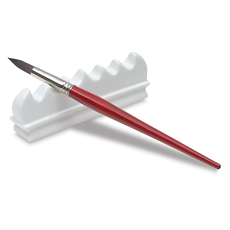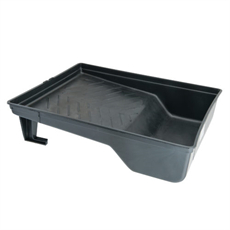The choice of brush bristles, whether natural or synthetic, can have a significant impact on the performance and application of paint. Natural bristles come from various animals, and the type of bristle used can affect the paintbrush’s characteristics. Here’s a brief overview of the science behind natural brush bristles:
- Types of Natural Bristles:
- Hog Bristles: These are among the most common natural bristles used in oil painting brushes. They are sourced from hogs and are known for their stiffness and durability. The interlocking structure of hog bristles allows them to hold and release oil paint effectively.
- Sable Bristles: Sable brushes are made from the tail hair of certain species of sable, marten, or weasel. They are prized for their softness and ability to hold a fine point, making them popular for watercolor and detailed work in oil and acrylic painting.
- Squirrel Bristles: Squirrel hair brushes are extremely soft and absorbent, making them suitable for watercolor and washes. They can hold a large amount of water or paint and release it gradually.
- Kolinsky Sable Bristles: Kolinsky sable brushes are considered some of the finest and are often used by professional artists. They come from the Siberian weasel and are known for their fine point and excellent spring, making them ideal for detailed work in watercolor and oils.
- Camel Hair: Contrary to its name, camel hair brushes are typically made from various types of squirrel hair. They are soft and used for watercolor and wash techniques.
- Bristle Structure:
- The microscopic structure of natural bristles plays a crucial role in their performance. For instance, hog bristles have a natural “flagging” or split end, which helps hold paint and create textured strokes. This flagging results from the tapered shape of the bristle tip.
- The natural scales on the surface of animal hair bristles also contribute to their ability to hold and release paint. These scales create a capillary effect, drawing liquid into the bristle and allowing for controlled application.
- Absorbency and Release:
- The absorbency of natural bristles varies depending on the type of hair. For example, squirrel hair is highly absorbent, while hog bristles are less so. This impacts how much paint a brush can hold and how it releases that paint onto the canvas or paper.
- Durability:
- Natural bristle brushes, such as hog bristles, tend to be more durable and resilient than some synthetic options. They can withstand the rigors of oil painting, where solvents and heavy paint applications are common.
- Maintenance:
- Proper care is essential for natural bristle brushes to ensure their longevity. Cleaning brushes thoroughly after use, using appropriate solvents for the type of paint used, and reshaping the bristles are all important steps in maintenance.
It’s important to note that ethical concerns surrounding the use of animal hair have led to the development of high-quality synthetic brushes that mimic the performance of natural bristles. Synthetic brushes can be a cruelty-free and viable alternative for artists who prefer not to use animal-derived materials












